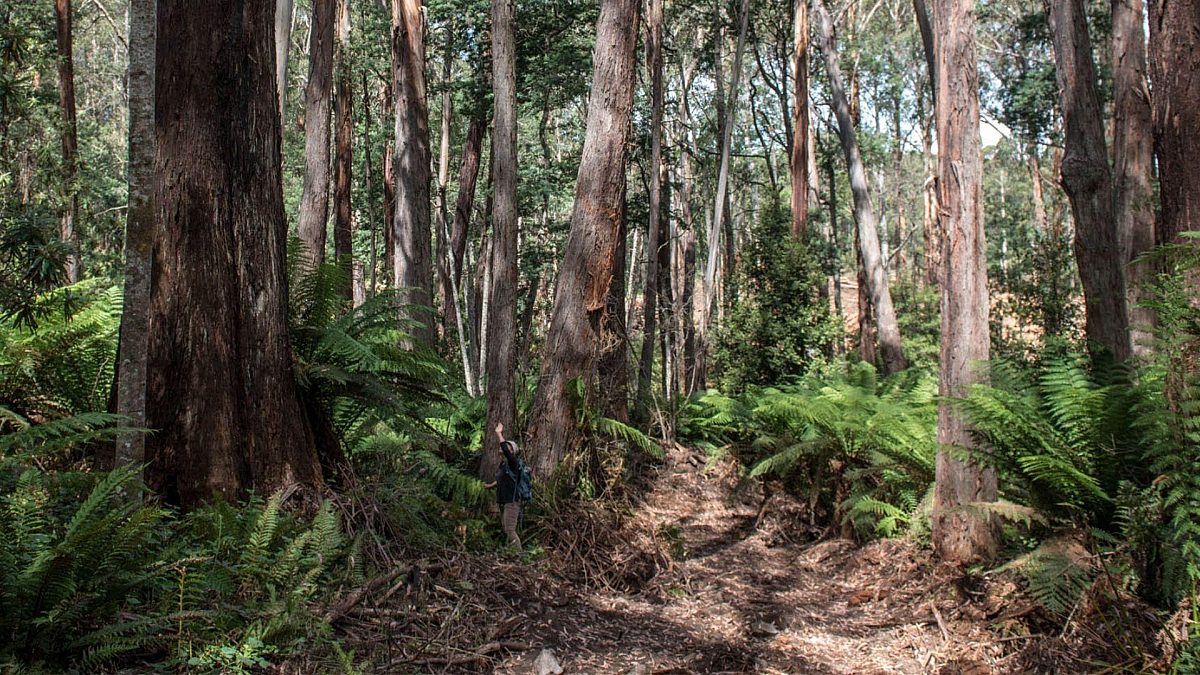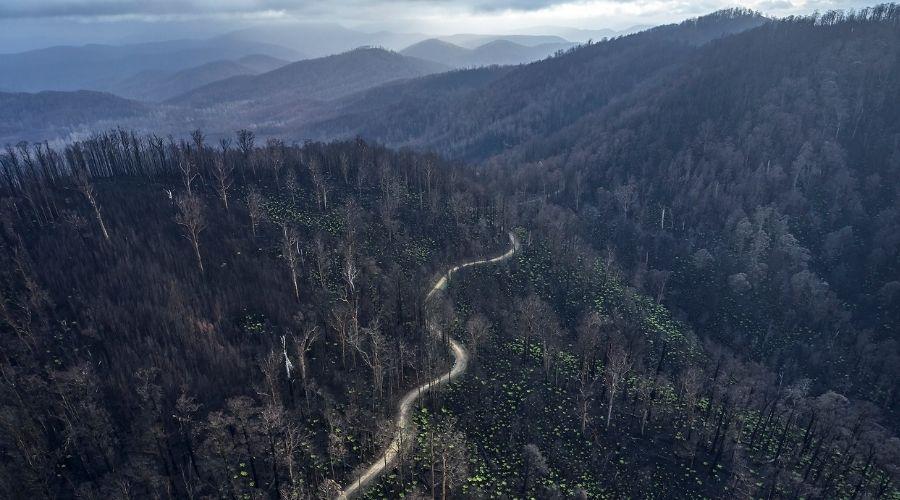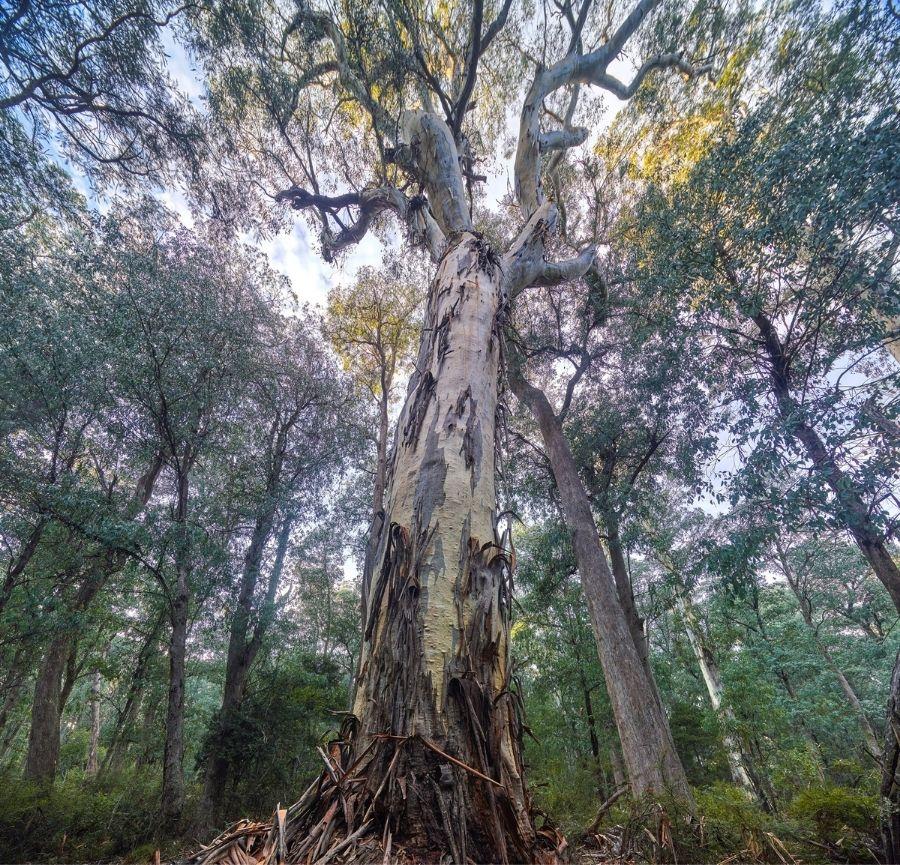
Protecting Eastern Victoria's forest refuges
A new report highlights areas of east Victoria’s forests that need protecting if threatened and endangered animals and plants in the region are to be given a chance at recovery following the 2019–20 bushfires. Image above: Lisa Roberts.
The Wilderness Society is supporting the release of a new conservation group report into the state of East Victoria’s forests following the 2019-20 bushfires. Commissioned by the Victorian National Parks Association, along with local East Gippsland conservation groups, the report After the Fires: protecting our forest refuges follows an analysis of the region's forests from maps and data, and the unique habitats they support.
Eastern Victoria has long been a stronghold for forest biodiversity and rare and threatened plants and animals, making its regional reserves, national parks and state forests hotspots for nature-based tourism. Unprecedented in scale and severity, the 2019–20 bushfires in eastern Victoria have put much of this at risk.
Despite the fires, state-owned logging company VicForests is still planning to log over 20,000 hectares in significant areas of unburnt forests.
The report highlights 10 key areas to protect as wildlife refuges in East Gippsland, Tambo, and the North-East, where logging could still take place. Unburnt pockets of forest in these key locations are critical support for threatened animals like the sooty owl, southern greater glider, spot-tailed quoll and long-footed potoroo.

The forests are critical for bushfire affected wildlife, and yet logging still threatens these animals in the small, fragmented areas where they’re found. “Whether it was the threatened Greater Glider, or more common animals like lyrebirds and wallabies, all were hit hard by the fires. Thousands were killed directly by flames or the thick smoke, suffered burn injuries or died from lack of food and shelter,” says Jordan Crook, spokesperson for Victorian National Parks Association.
To give these animals and the ecosystems they depend on a fighting chance to recover, the report is calling for logging to cease in these precious remaining forests. The Victorian Government must take decisive action to stop these areas from being logged.
What’s under threat?

The Black Summer bushfires of 2019-2020 had a devastating impact on plants and animals in East Victoria. More than 1.25 million hectares was burnt across the three most heavily impacted Forest Management Areas (FMAs) of East Gippsland, North-East and Tambo.
The report reveals that more than 200 flora species have had 50–100% of their extent affected by the fires, of which 154 have been identified by the Department of Environment, Land, Water and Planning (DELWP) as of high concern due to fire impacts.
DELWP also identified 67 fauna species of most concern, with 20 having between 50–80% of their distribution within fires affected areas.
Logging in East Victoria has profoundly changed large areas of forest and reduced habitat size and quality. For the bushfire-affected threatened species, the report highlights logging as a major threat to their already precarious status. The key unburnt refuge areas identified in the report should be the immediate and ongoing focus for conservation. Across the 10 refuge areas, 553 logging coupes covering more than 20,000ha of forest are planned for logging by the Victorian government’s logging agency VicForests.
What needs to be done

In light of the impacts of the 2019–20 bushfires and continuing threats logging poses to wildlife, the Wilderness Society makes the following recommendations:
- Protect each of the key refuges identified in this report and any other remaining unburnt forests from current and future logging to ensure the survival and persistence of flora and fauna species that rely on these forests to survive.
- Commit to not logging any identified habitat remaining in Victoria for each threatened species significantly affected by the 2019–20 bushfires, particularly those species listed in this report. Many of the species listed in this report are set to have their conservation status upgraded in the next 24 months. Protecting any remaining habitat from logging while this process is undertaken is a critical first step to giving these species the best chance of recovery following the catastrophic bushfires.
- Bring forward the 2030 transition. In November 2019 the Victorian government committed to a decade-long transition out of native forest logging. This timeframe was too slow even before the bushfires and its devastating impact on forests and wildlife. For the survival of threatened and endangered wildlife, there is an even more urgent need to rapidly transition the logging industry.
- Prioritise funding and restoration of areas impacted by the bushfires to restore habitat and provide better resources for weed and pest control programs in forest areas to improve recovery from bushfire events.
- Declare and map the key refuges identified as high priority assets in need of protection from all types future fires. and undertake intensified threat management.
The Wilderness Society recognises the rights and interests of Traditional Custodians in all aspects of land and water management, as well as decision-making in relation to their traditional lands, regardless of current land tenure. In making these recommendations, we advocate for an ongoing process of consultation and negotiation between governments and Traditional Owners that recognises and supports Traditional Owner decision-making processes across the spectrum of tenure and management arrangements and fosters clearer understanding of each other's perspectives and the development of agreements.